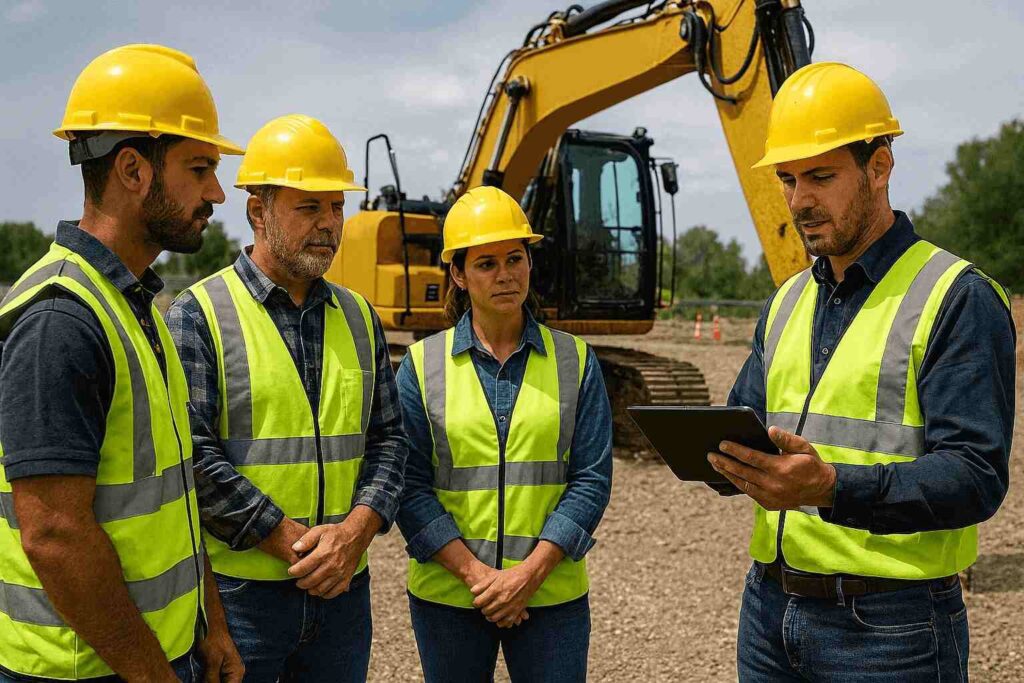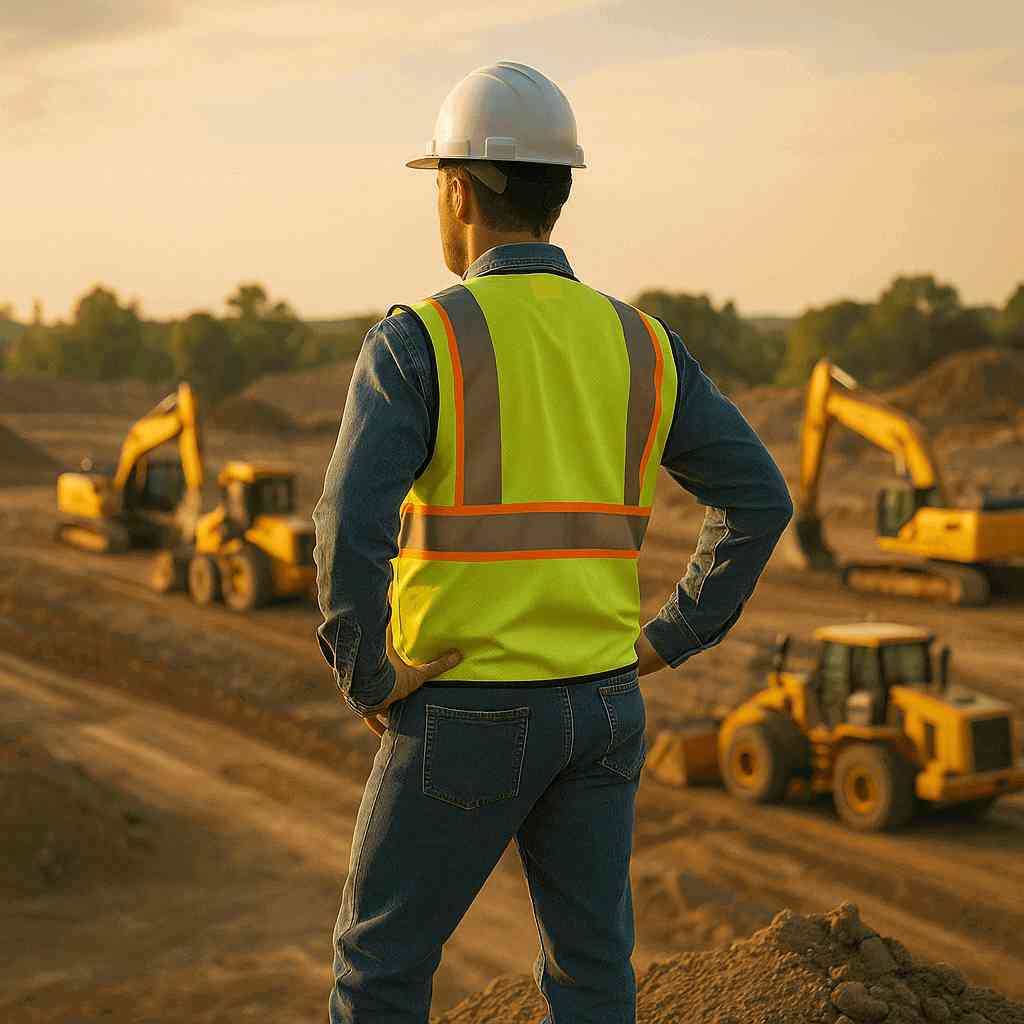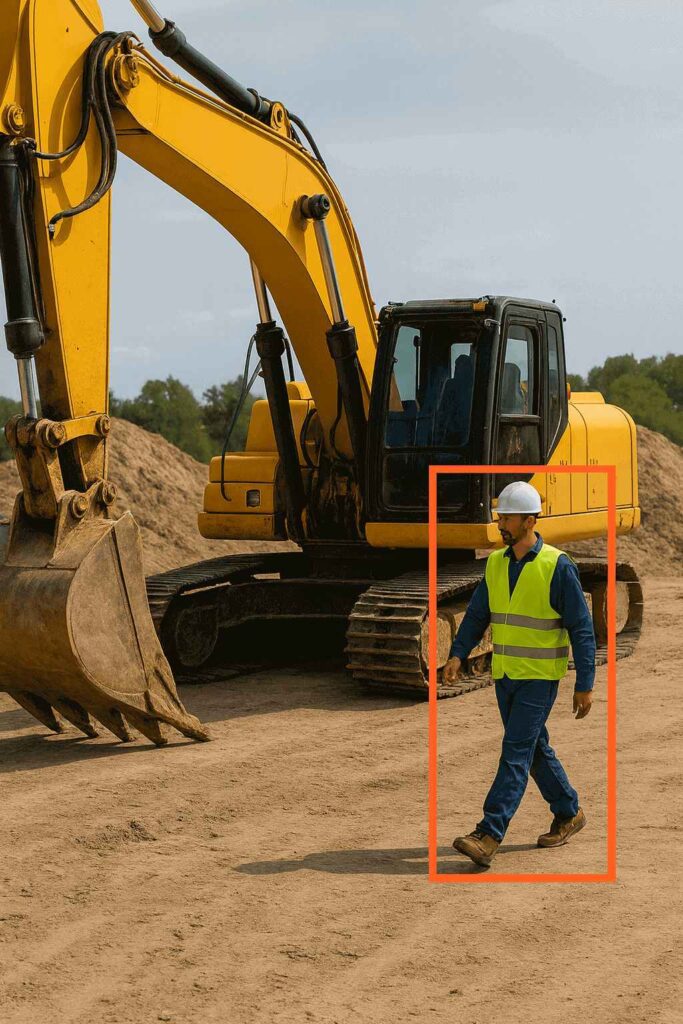Construction Safety Compliance with AI Camera Systems
Today’s construction sites are under more scrutiny than ever—from both regulators and the public. Meeting safety compliance isn’t just a box to check—it’s a strategic necessity. With rising demands from OSHA and ISO 45001, construction companies must move beyond paper checklists and adopt proactive, data-driven tools to protect workers.
AI-powered camera systems, like Blaxtair, are transforming the way compliance is achieved. These systems help detect pedestrians in real time, prevent struck-by incidents, and deliver actionable safety data—helping companies stay compliant while safeguarding their most valuable asset: human life.
Why Construction Safety Compliance Matters
Construction remains one of the most hazardous industries globally. Each year, OSHA cites thousands of violations in categories like fall protection, machine hazards, and struck-by incidents—three of the most common causes of workplace injuries and fatalities.
Compliance isn’t just about avoiding fines; it’s about establishing a culture of prevention. Organizations that actively monitor risks, enforce safe zones, and leverage modern detection technology consistently report fewer incidents and greater operational efficiency.
Regulatory frameworks such as OSHA 29 CFR 1926 and ISO 45001 now emphasize continuous risk mitigation—requiring employers to demonstrate how hazards are monitored and controlled in real time, not just after an incident occurs.

Key Compliance Challenges on Construction Sites
Limited Visibility and Blind Spot Risks
Heavy equipment such as excavators, wheel loaders, and dump trucks have large blind spots. In busy or uneven job sites, operators can easily lose sight of nearby ground workers—especially in low-light or cluttered conditions.
Lack of Real-Time Risk Monitoring
Traditional safety audits often rely on manual inspections or incident reports. These reactive measures fail to capture near-misses, leaving teams unaware of recurring risks until it’s too late.
Inconsistent Safety Training and Workforce Turnover
High turnover, seasonal labor, and subcontractors make consistent training difficult. Temporary workers may not know where the danger zones are or how to interact safely with machinery.
These challenges make real-time visibility and intelligent detection critical to maintaining compliance and preventing accidents.
AI Camera Systems: A Compliance-Driven Safety Upgrade
Pedestrian Detection That Exceeds Standards
Unlike traditional sensors that simply detect movement, Blaxtair’s AI camera system identifies human beings specifically—differentiating them from objects or vehicles. This precision reduces false alarms and ensures that operators only receive alerts when a real pedestrian is nearby.
Embedded Systems for Construction Machinery
Blaxtair is fully integrated into vehicles like excavators, dumpers, and loaders. Its advanced vision system meets OSHA recommendations for improved operator visibility and aligns with ISO 5006 guidelines on machine blind zones.
Real-Time Analytics with Blaxtair Connect
Through Blaxtair Connect, site managers can track near misses, operator response times, and high-risk behaviors. The system generates automatic reports for OSHA audits, ISO 45001 documentation, and internal safety briefings—turning data into actionable insights for continuous improvement.

Aligning with Major Safety Standards
OSHA Construction Safety Regulations
Blaxtair supports OSHA’s mission to prevent struck-by accidents—one of the leading causes of fatalities in construction. By improving operator visibility and enabling early warnings, it helps companies maintain compliance with critical regulations such as 29 CFR 1926.600 (Equipment Operation) and 1926.21 (Safety Training and Education).
ISO 45001: Global Benchmark for Safety Management
ISO 45001 requires organizations to demonstrate ongoing hazard identification, risk reduction, and worker participation in safety systems. Blaxtair simplifies these obligations by providing measurable evidence of proactive risk control through its automated logging and reporting features.
Local and and Client-Specific Requirements
Beyond OSHA and ISO, many construction clients now demand proof of safety technology adoption during bid evaluation. Integrating AI camera systems demonstrates due diligence, helping companies stand out in competitive tenders.
Real-World Applications & Use Cases
AI safety solutions like Blaxtair are redefining compliance in real-world scenarios by combining accuracy, adaptability, and intelligent data feedback. Across construction environments—from urban developments to remote industrial sites—AI vision delivers protection where it matters most.
Urban Construction Sites
In high-density cities, where pedestrians, workers, and vehicles often share limited space, AI-powered detection plays a vital role. Blaxtair systems continuously monitor for pedestrians in restricted areas, detecting movement even around blind corners or heavy traffic zones. These real-time alerts help prevent serious incidents, safeguard public areas, and ensure full compliance with city safety ordinances and OSHA visibility standards.
Government Infrastructure Projects
Public sector construction projects demand strict adherence to transparency and safety reporting. Blaxtair supports this by generating comprehensive detection logs and compliance reports that align with both OSHA and federal infrastructure safety mandates. From bridge construction to highway expansion, Blaxtair ensures contractors meet public accountability standards while reducing on-site risk.
High-Risk Equipment Operations
Environments with multiple machines—like cranes, excavators, and telehandlers—require intelligent coordination. Blaxtair’s embedded AI modules provide consistent coverage across fleets, ensuring each machine contributes to a connected, site-wide safety ecosystem. The system adapts to dynamic conditions, such as night work or complex terrain, improving compliance and reducing liability across every operational level.

The ROI of Compliance Through AI
Safety compliance isn’t just regulatory—it’s economical. AI-driven systems reduce accident-related downtime, cut insurance costs, and help avoid fines that can exceed $15,000 per OSHA violation. More importantly, they protect workers and strengthen a company’s safety reputation.
Companies that implement AI-powered detection solutions like Blaxtair report:
– Up to 80% fewer pedestrian near misses
– Improved audit readiness and documentation accuracy
– Enhanced operator confidence and retention
By pairing technology with safety culture, construction firms create resilient, compliant operations that protect both people and profitability.
Build Safer, Smarter, and Fully Compliant Sites
As construction projects become more complex and deadlines tighter, meeting safety compliance demands innovation—not just adherence. AI camera systems like Blaxtair provide the intelligence, visibility, and data transparency needed to stay ahead of OSHA and ISO standards.
FAQs
Ready to future-proof your construction site? Request a demo to see how Blaxtair can help your team achieve full safety compliance with AI-powered confidence.
How can AI cameras help with construction site safety compliance?
AI camera systems like Blaxtair detect pedestrians in real time and prevent blind spot-related accidents. This directly supports OSHA and ISO safety compliance by minimizing human error, improving situational awareness, and offering verifiable safety data for audits.
Are AI safety systems required for OSHA compliance?
While not explicitly mandated, OSHA emphasizes hazard recognition and control as core elements of compliance. Implementing AI pedestrian detection systems like Blaxtair is a proactive measure that demonstrates due diligence under OSHA’s “struck-by” prevention requirements, significantly strengthening compliance posture.
What’s the difference between Blaxtair and standard proximity sensors?
Traditional proximity sensors detect any nearby object, leading to frequent false alarms and operator fatigue. Blaxtair, however, uses AI-driven image recognition to identify only humans—eliminating false positives and improving accuracy. This makes it a far more effective compliance tool, especially for dynamic, high-traffic construction sites.
Can Blaxtair integrate with existing safety management systems?
Yes. Blaxtair Connect integrates seamlessly with digital fleet management and safety compliance platforms, allowing companies to centralize reporting, automate safety documentation, and analyze trends across multiple job sites—all in real time.
